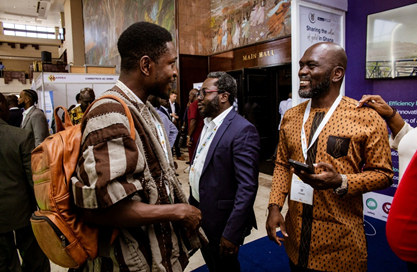By Kizito CUDJOE
Gold Fields Ghana Limited has reaffirmed its commitment to achieving nature-positive mining as part of its operations, in line with the 2030 global target set by the International Council on Mining and Metals (ICMM).
The ICMM, of which Gold Fields Ghana is a member, has committed to taking urgent action in support of a nature-positive future by 2030; one that promotes health, diversity and resilience for species, ecosystems and natural processes.
With responsibly sourced minerals and metals playing a critical role in advancing the United Nations Sustainable Development Goals, ICMM members – who collectively represent about a third of the global mining industry – have pledged that meeting growing global demand for essential materials must not come at the expense of nature.
It is in line with this commitment that John Kwasi Adingelah, Senior Manager, Environment and Laboratories at Gold Fields Ghana, says the company is aligning its operations with this new direction.
“The goal now is not just to minimise our environmental footprint but actively promote the diversity of nature around our mining operations. Instead of reducing biodiversity, we want to help restore and enhance it,” he said.
Mr. Adingelah, who was speaking in an interview with B&FT on the sidelines of a mining conference in Accra, added that while the nature-positive agenda presents new challenges, it also offers an opportunity for the company to rethink mining’s relationship with the environment and work closely with communities and regulators on building more resilient ecosystems around mine sites.
This is particular apt with environmental sustainability at the heart of responsible mining practices globally.
With adoption of the global biodiversity framework under ICMM’s commitment, Gold Fields is in the process of undertaking a gap analysis to identify how its current baseline compares to its expectations to achieve nature-positive mining by 2030, Mr. Adingelah said.
“Once we are done with that assessment, in addition to doing a risk assessment, we will be able to develop proper strategies and actions which will help us achieve nature-positive mining by the set target date.”
Gold Fields Ghana, he said, prioritises its land reclamation commitments – with projects designed to restore impacted lands to the state in which they were before being mined.
“We have policies on biodiversity conservation, wildlife conservation, among others. The broader paradigm now is to leave the land in an even better condition than before mining began,” he stated.
He reiterated that the company has a progressive rehabilitation approach, which enables it to rehabilitate the impacted lands concurrently while continuing to mine; ensuring that by end of the mine’s life the land will remain intact.
Additionally, he stated that the company has signed a reclamation security agreement with government through the Environmental Protection Authority (EPA) in which a specific amount of money is set aside to fund reclamation activities upon the mine’s closure.
This ensures that in an unforeseen scenario where the mine ceases operations, the funds can be utilised to carry out reclamation of areas where it was working.
For example, the estimated cost for reclamation of Gold Fields’ Tarkwa Mine at closure is about US$92.7million.
“Every year, we assess the size of disturbed land, estimate the cost of restoration and adjust the reclamation bond accordingly,” he said.
He further cited that the closure cost estimate of the Damang Mine, a smaller concession compared with the Tarkwa Mine, is approximately US$26million.
Regarding Gold Fields’ contributions to emissions, Unit Manager Energy at Gold Fields, David Kojo Larbi also stated the company aims to reduce its Scope 1 and 2 emissions by 30 percent before 2030.
The four strategic pillars which support the company’s green energy commitments, he said, focus on diesel consumption, electricity, energy-efficiency projects and leveraging nature.
“In terms of each of these strategic pillars, there are various programmes that are ongoing to ensure we reduce our emissions and energy consumption in that area,” he said.










